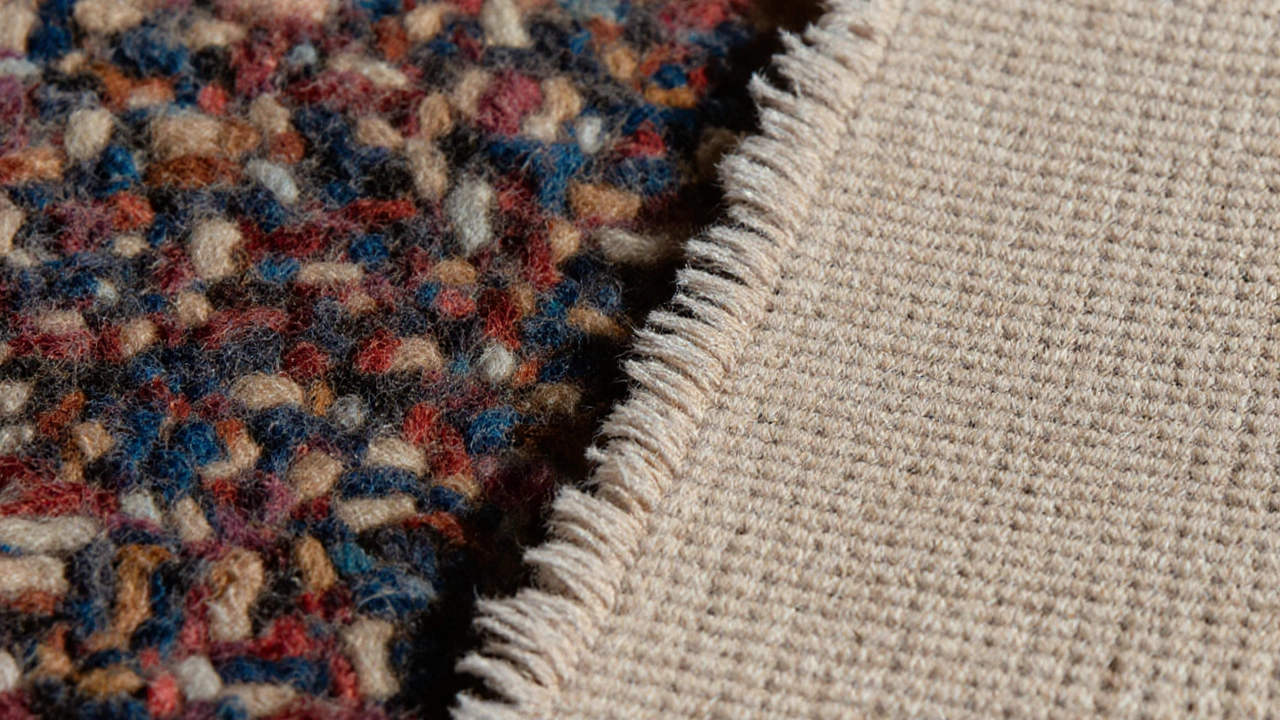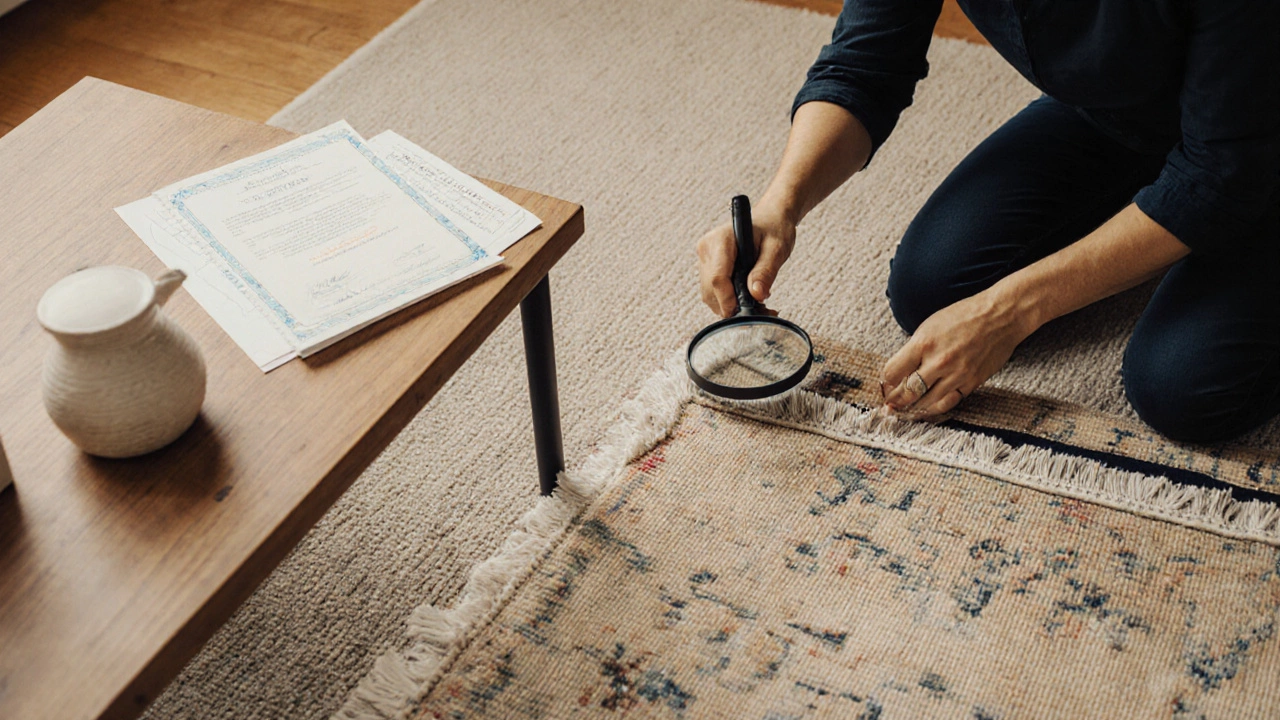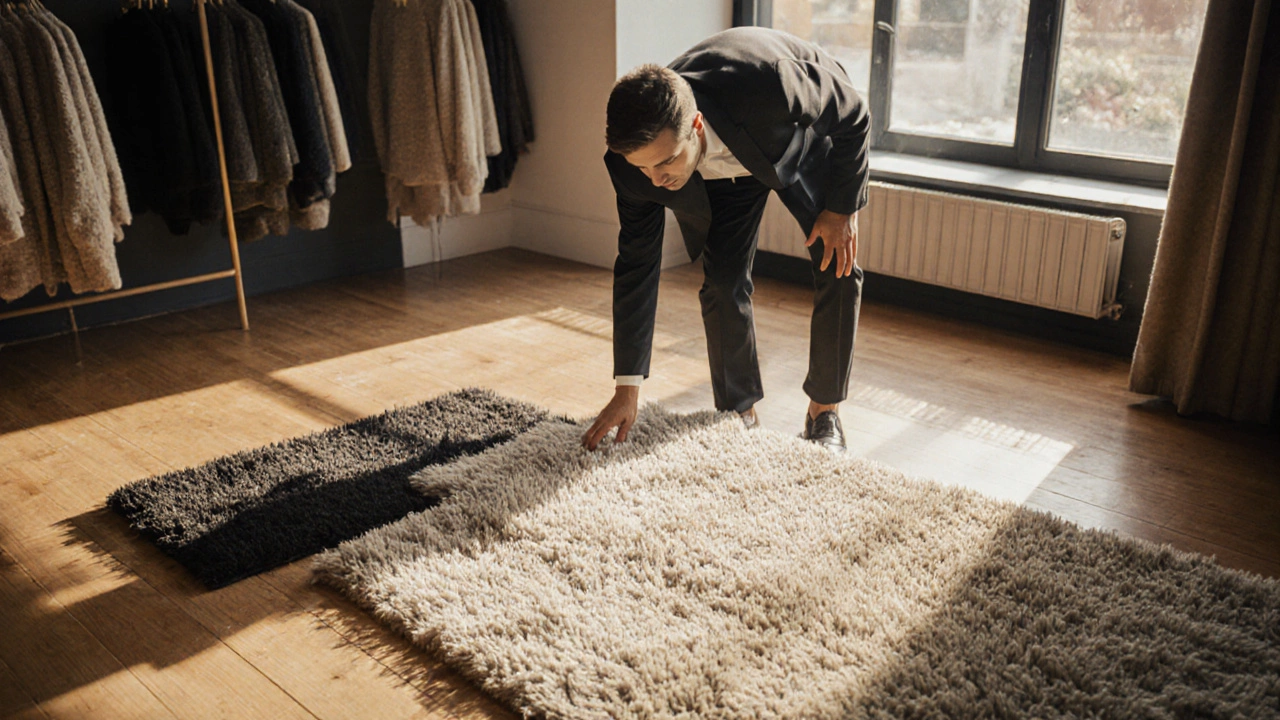When you’re eyeing a plush floor covering, the first question is often, “Is this rug pricey because it’s truly high‑end or just a clever marketing trick?” This guide walks you through the exact clues that separate a genuine luxury piece from a budget look‑alike, so you can feel confident before you spend.
What Actually Determines a Rug’s Price?
Price isn’t random; it reflects a blend of material rarity, labor intensity, provenance, and market demand. A expensive rug usually scores high on several of these factors at once. Below we break each one down.
Materials: The Foundation of Value
Wool is a natural fiber prized for its durability, softness, and ability to hold dye. Premium wool from regions like Mongolia or New Zealand often carries a higher price tag because the fibers are finer and longer, producing a smoother pile.
Silk, on the other hand, adds a luxe sheen and a buttery feel. A silk‑dominant rug can cost twice as much as a comparable wool piece, especially when the silk comes from traditional sources such as China’s Suzhou region.
Less expensive rugs rely on synthetic blends (nylon, polypropylene). While modern synthetics mimic natural looks, they lack the depth and longevity of wool or silk, making them a common budget option.
Knot Density and Weave Technique
Hand‑knotted rugs are measured in knots per square inch (KPSI). A high KPSI-typically 200+ for Persian rugs-means more knots, tighter detail, and a longer lifespan. Machine‑woven rugs usually list a "loop count" that’s far lower, often under 50, which directly translates to lower cost.
Another clue is the weave style. Flatweave involves looms that produce a thinner, reversible rug. While beautiful, flatweaves rarely achieve the same price as a hand‑knotted pile of equal size because they require fewer knots.
Origin and Brand Reputation
Geographic origin acts like a badge of honor. Rugs from Iran (Persian), Turkey (Anatolian), Afghanistan (Kashmir), and India (Kashmir, Rajasthan) command higher prices because of centuries‑old weaving traditions and limited production runs.
Brand matters too. Names such as Safavieh is a respected American‑based retailer known for curating high‑quality Persian‑style designs or Ruggable offers a detachable, machine‑washable system that has popularized premium‑looking rugs at mid‑range prices can signal consistent quality, but beware of over‑hyped label‑only value.

Age, Provenance, and Rarity
Antique rugs (typically 100+ years old) are prized for their history and patina. Provenance documentation-sale receipts, appraisal certificates, or gallery records-adds credibility and can push a rug’s price well beyond its material worth.
Limited‑edition designs or rugs from a single master weaver are essentially “collector’s items.” Their scarcity fuels demand, which translates into a premium price tag.
Condition, Restoration, and Care
A rug in pristine condition commands a higher price. Look for even wear, intact fringe, and no signs of repair. Professional restoration (re‑knotting, re‑binding) can restore value, but the cost of restoration will be reflected in the final asking price.
Proper care-regular vacuuming, rotation, and professional cleaning-preserves a high‑end rug’s appearance, ensuring that the investment holds value over time.
Red Flags: Common Tricks Sellers Use
- Vague material claims (e.g., “premium blend”) without specifying fiber content.
- Inflated knot counts that don’t match the rug’s size; a quick visual check can reveal inconsistencies.
- Overly glossy photos that hide a synthetic sheen; inspect the pile in person or request close‑up shots.
- Unverified country of origin-some sellers label a rug “Persian‑style” when it’s actually machine‑made in China.
- Lack of a return policy or authenticity certificate.

Quick Comparison: What to Look For
| Attribute | Luxury / Expensive | Budget / Mass‑Market |
|---|---|---|
| Primary material | 100% high‑grade wool or silk | Polypropylene, nylon blend |
| Knot density | 200+ KPSI (hand‑knotted) | Under 50 KPSI or loop count |
| Origin | Iran, Turkey, Afghanistan, India | China, Bangladesh, mass‑produced factories |
| Age / provenance | Antique or documented limited edition | New, no provenance |
| Brand / designer | Established heritage brand or master weaver | Generic store brand |
| Finish | Soft hand, deep color saturation, natural sheen | Stiff, uneven dye, artificial shine |
How to Verify Before You Buy
- Ask for a detailed material breakdown and request a fiber test if you’re buying online.
- Measure the rug and calculate an approximate knot count (count knots in a 1‑inch square and multiply by the rug’s area).
- Check the back side: hand‑knotted rugs show irregularities, while machine‑made backs are uniformly flat.
- Request provenance paperwork or a reputable dealer’s appraisal.
- Inspect the fringe and edges for fraying or uneven stitching.
- Feel the pile-luxury fibers feel warm, soft, and spring back quickly.
Frequently Asked Questions
How can I tell if a rug is genuine hand‑knotted?
Look at the back: hand‑knotted rugs have an irregular, uneven pile because each knot is tied individually. The surface will show subtle variations in knot density, and the fringe will often be hand‑stitched. Machine‑woven rugs have a uniform, flat back and consistent loop pattern.
Does a higher price always mean better quality?
Not always. Some brands charge a premium for branding alone. Look at the material, knot density, origin, and condition. A moderately priced rug with high‑grade wool and a solid KPSI may outlast a “luxury” rug made of silk that’s prone to fading.
What is a good price range for a high‑end 8×10 hand‑knotted Persian rug?
In 2025, a quality 8×10 Persian rug made from 100% wool with a knot density of 250KPSI typically ranges from £4,500 to £9,500, depending on the specific region, age, and designer reputation.
Can synthetic rugs ever feel as luxurious as natural‑fiber rugs?
Modern high‑quality polypropylene can mimic the look of wool, but it lacks the same warmth and breathability. For true luxury feel, natural fibers, especially fine wool or silk, remain the benchmark.
How important is provenance when buying an antique rug?
Provenance is crucial. Documentation verifies age, origin, and authenticity, which directly affects value. Without it, even an old rug may be discounted heavily because buyers can’t confirm its history.

